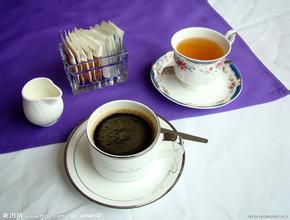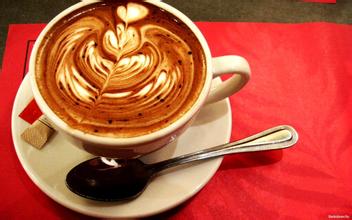Introduction to the planting Environment of Hope Manor Coffee varieties in Columbia Coffee producing area with pleasant Climate
In 1815 Bolívar envisaged in his Letter from Jamaica that, when South America was liberated from Spanish colonial rule, New Granada and Venezuela should form a single state and be named "Colombia." In August 1819, Bolivar's Patriotic Army defeated the Spanish colonial army at the Battle of Poiaca and liberated Bogotá. New Granada and most of Venezuela were liberated. Bolívar, with the consent of the Patriots of New Granada, proposed in the Venezuelan Congress held in Angostura in December of the same year that Venezuela and New Granada should form a united State. On December 17, Congress passed a resolution formally uniting the two regions.
Greater Republic of Colombia
Greater Republic of Colombia
Republic of Colombia. In May 1821, Colombia held a constituent assembly in the provisional capital of Cucuta. On August 20, the conference adopted and promulgated the first constitution of Colombia. The Constitution provided for a centralized republic and a series of decrees proclaiming the abolition of slavery, the emancipation of slaves and their children, the prohibition of slave trade, equal rights for citizens and freedom of speech and of the press. The Conference elected the Bolivarian Republic as the first President and Santander as Vice-President. In May 1822, General Bolivar Sucre led his army to liberate Quito, and Ecuador declared its accession to the Republic of Colombia.
In 1823, Bolivar, at the request of the Peruvian patriots and with the approval of Congress, led Colombia troops into Peru to fight Spanish colonial forces.
In 1824, Colombia and Peru allied forces defeated the Spanish colonial army and Peru gained independence. During Bolivar's war in Peru, Santander acted as president and presided over Colombia's government affairs. Santander advocated the establishment of a federal regime and united local forces to oppose Bolivarian unity. factional struggles within Colombia's Congress and government are becoming increasingly acute
Colombia, located in the northwest of South America, is a beautiful country with a long history. Indians have lived on this land since ancient times. It became a Spanish colony in 1531 AD and gained independence in 1819. It was renamed in 1886 to commemorate Columbus, the discoverer of the American continent. Colombia, beautiful mountains, beautiful scenery, pleasant climate, four seasons such as spring, fresh air. Colombia is rich in products, especially coffee, flowers, gold and emeralds known as the "four treasures." Today the country is the second largest coffee producer after Brazil, the world's largest exporter of Arabica coffee beans and the world's largest exporter of washed coffee beans. Often described as having a silky texture, Colombia coffee has the best balance of all coffees. It tastes soft, silky, and ready to drink, and it has earned a reputation that no other coffee can match: "green gold."
Species morphology editor
Colombia coffee plant morphology
Colombia coffee plant morphology
Colombia coffee varieties are mainly small coffee. Plants are small trees or large shrubs, 5-8 meters high, usually multi-branched at the base; old branches are gray, nodes expand, young branches glabrous, compressed. Leaves thinly leathery, ovate-lanceolate or lanceolate, 6-14 cm long, 3.5-5 cm wide, apex long acuminate, acuminate 10-15 mm long, base cuneate or slightly obtuse, rarely rounded, entire or shallowly undulate, glabrous on both surfaces, with or without pits in axils of lower veins; midvein raised on both surfaces of leaf blade, lateral veins 7-13 on each side; petiole 8-15 mm long; Stipules broadly triangular, born at the top of the young branches conical long pointed or awned tip, born at the top of the old branches are often pointed, long 3-6 mm. Cymes several clustered in leaf axils, each inflorescence 2-5 flowers, without pedicel or with very short pedicel; flowers aromatic, pedicels 0.5-1 mm long; bracts more or less united at base, dimorphic, 2 broadly triangular, nearly equal in length and width, 2 lanceolate, 2 times as wide, foliaceous; calyx tubular, 2.5-3 mm long, calyx limb truncate or 5 denticulate; Corolla white, length varies with species, generally 10-18 mm long, apically often 5-lobed, rarely 4-or 6-lobed, lobes often longer than corolla tube, apically often obtuse; anthers protruding outside corolla tube, 6-8 mm long; styles 12-14 mm long, stigmas 2-lobed, 3-4 mm long. Berry broadly elliptic when ripe, red, 12-16 mm long, 10-12 mm in diam., exocarp dural, mesocarp fleshy, sweet; seeds raised abaxially, ventral plane, longitudinally grooved, 8-10 mm long, 5-7 mm in diam. Flowering March-April

Important Notice :
前街咖啡 FrontStreet Coffee has moved to new addredd:
FrontStreet Coffee Address: 315,Donghua East Road,GuangZhou
Tel:020 38364473
- Prev

Introduction to fine coffee with mild acidity and taste characteristics of Costa Rican goddess manor coffee
The current Constitution entered into force on November 7, 1949. The Constitution stipulates that the state implements a republic with the separation of legislative, judicial and executive powers. The General Audit Office and the Supreme Electoral Court are independent bodies. The President shall be the head of State or Government and may stand for re-election every other term; the President and Vice President shall be directly elected for a term of four years; when the President is absent, the first Vice President and the second Vice President shall negotiate in turn.
- Next

Aroma rich, smooth and delicate Nicaragua manor coffee flavor characteristics
Managua, the capital of Nicaragua, is located in the western part of the border, on the south bank of Lake Managua, and hence its name. 140 kilometers northwest of Corinto Harbor on the Pacific coast. 55 meters above sea level. It is a beautiful Spanish city. Because it is located on the east side of the Pacific volcanic seismic belt, four strong earthquakes have erupted in the city in the past 100 years, including one in December 1972.
Related
- Does Rose Summer choose Blue, Green or Red? Detailed explanation of Rose Summer Coffee plots and Classification in Panamanian Jade Manor
- What is the difference between the origin, producing area, processing plant, cooperative and manor of coffee beans?
- How fine does the espresso powder fit? how to grind the espresso?
- Sca coffee roasting degree color card coffee roasting degree 8 roasting color values what do you mean?
- The practice of lattes: how to make lattes at home
- Introduction to Indonesian Fine Coffee beans-- Java Coffee producing area of Indonesian Arabica Coffee
- How much will the flavor of light and medium roasted rose summer be expressed? What baking level is rose summer suitable for?
- Introduction to the characteristics of washing, sun-drying or wet-planing coffee commonly used in Mantenin, Indonesia
- Price characteristics of Arabica Coffee Bean Starbucks introduction to Manning Coffee Bean Taste producing area Variety Manor
- What is the authentic Yega flavor? What are the flavor characteristics of the really excellent Yejasuffi coffee beans?

